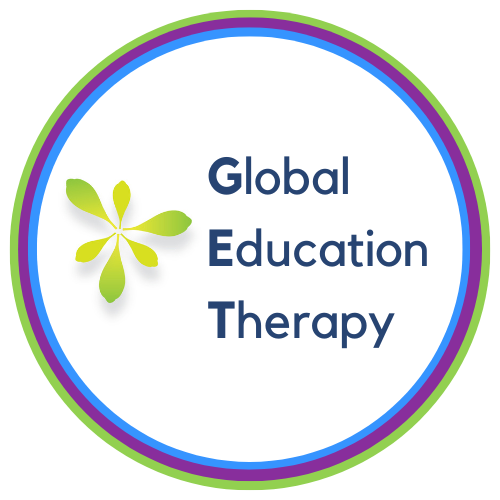GET Help: How long will it take to see progress in speech therapy?
You may not know what to expect when your child begins speech therapy. How long will it take to fix a speech sound error? Should I be correcting my child? What should I be practicing?
Global Education Therapy is here to answer your questions :)
Key Terms
Speech Sound Disorder: Umbrella term for errors related to speech production
Articulation Disorder: Errors producing certain sounds (e.g., a lisp)
Phonological Disorder: A pattern of errors that affect more than one sound*
*Often phonological disorders take more time to resolve since it’s a pattern of errors rather than a single sound error.
Top 5 Common Misconceptions about Treatment for Speech Sound Disorders
Your speech therapist can tell exactly how long until your child’s error is fixed
All speech sounds are the same level of difficulty
When a child is learning a new sound, you should correct it at home during conversation
The goal of speech therapy is 100% accuracy
The hardest part of speech therapy is learning the sound by itself
Because speech sound errors are unique to each child and some are more difficult to learn than others, it is unlikely your speech therapist can tell you exactly how long until your child’s speech sound errors are resolved. When a child is learning a new sound it is important to know what level and word position they are working on in speech therapy. The levels follow this hierarchy: practice the sound in isolation, syllables, words, phrases, sentences, paragraphs, structured conversation, and finally unstructured conversation/spontaneous speech. If your child is at the phrase level, you will not correct it in conversational speech. When learning a sound, your child will first learn it in the initial position of the word (cat), followed by medial (baking), and final (make). The goal of speech therapy is to increase intelligibility. Goals are typically written for 90% accuracy. Toward the end of speech therapy, children have to begin thinking about their sounds on their own with the ability to tell if they said it correctly. This can sometimes be the most difficult stage as producing a sound incorrectly becomes a habit. Depending on their age, it’s quite a big habit to break.
7 Tips for Helping a Child with Speech Sound Errors
Give positive feedback when sound is correct. Often we focus on what’s incorrect instead of encouraging when it is.
Repeat words back as they should sound
Cue the child in to listen to sounds in words. If a child says ”th” instead of "s", you could say: “Yes, it’s ‘sun’, ‘sun’ has an ‘s’ sound at the start, can you hear it? Sss-un”.
Use the letter sound, not the letter name, (e.g., it’s a “sssss”, rather than “ess”).
Try not to show frustration when you can’t understand.
If you can't understand what they've said, encourage them to draw, show you, or gesture to help you understand.
Incorporate sound awareness activities into your practice
Do’s and Don't for Practicing Speech Sounds
Don’t:
Correct every time
Ignore it
Ask them to repeat the sound better*
Do:
Communicate with SLP. Attend your child’s sessions to learn first hand when a sound is or isn’t correct.
Correct or repeat the word correctly based on their level of performance in speech therapy
Use the cues your speech therapist has taught to help specifically correct the sound error.
Want to work on your child’s goals at home? Global Education Therapy provides FREE word lists on our website. Ask your SLP which level and word position your child is working on so we can direct you to a list to practice.




